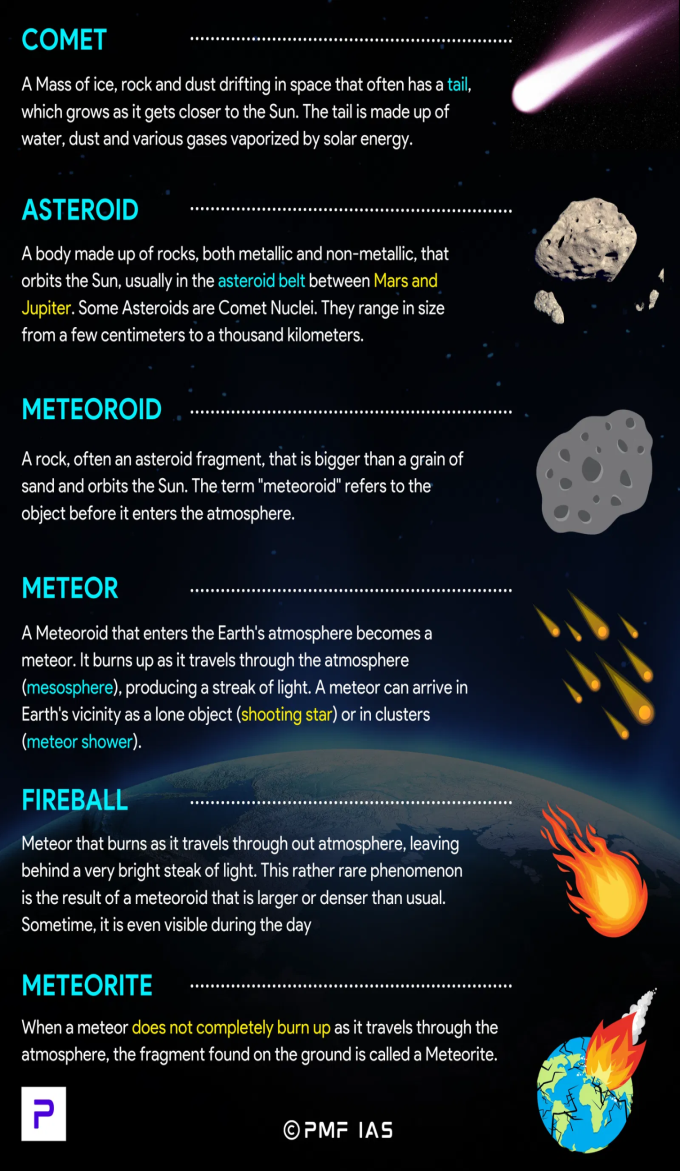Ancient Meteorite: A Giant Fertilizer Bomb for Early Life on Earth
Why in the news?
A new study shows that a massive meteorite impact 3.26 billion years ago, much larger than the one that killed the dinosaurs, may have aided early microbial life by providing essential nutrients.
Meteorite Impact and Its Immediate Effects:
- A meteorite, spanning 37-58 km, struck Earth 3.26 billion years ago, causing global devastation.
- The impact vaporised rocks, created a rock vapour cloud, and turned the sky black, with heat causing the upper ocean layers to boil.
- A massive tsunami swept across the globe, ripping up the seafloor and inundating coastlines.
Positive Role in Evolution of Life:
- Despite the destruction, the meteorite delivered essential nutrients like phosphorus and iron, key for early microbial life.
- These nutrients acted as “fertilisers,” aiding the recovery and growth of bacteria and archaea, which dominated the Earth at the time.
- Microbial life not only survived but thrived after conditions stabilised within a few years to decades.
Long-Term Environmental Impact:
- The meteorite impact mixed iron-rich deep waters with shallower waters, creating ideal conditions for microbial life.
- Phosphorus, crucial for genetic material, provided microbes with the resources to flourish.
- Researchers found evidence of life recovery in the Barberton Greenstone Belt, South Africa, through fossilised bacterial mats.
Difference Between Meteoroid, Meteor and Meteorite:
- Meteoroid: A small space object, ranging from dust grains to small asteroids, found in space.
- Meteor: When a meteoroid enters Earth’s atmosphere, it is referred to as a meteor, often visible as a bright streak of light or “shooting star.”
- Meteorite: If a meteoroid survives its journey through the atmosphere and reaches the Earth’s surface, it is called a meteorite.
- Key Difference: The classification (meteoroid, meteor, meteorite) depends on the object’s location—space (meteoroid), atmosphere (meteor), or Earth’s surface (meteorite).
Sources Referred:
PIB, The Hindu, Indian Express,Hindustan Times




